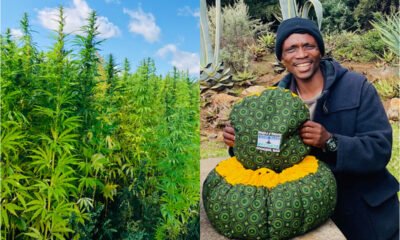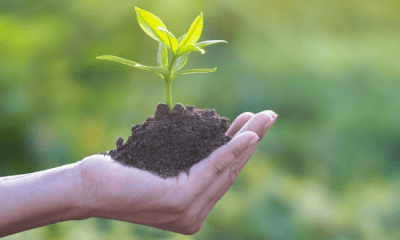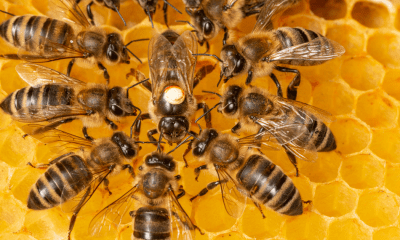After decades of negotiations, almost 200 countries have agreed to a historic deal to halt and reverse biodiversity loss by 2030. Cannabis could help get them to the goal while slashing carbon emissions in the process.
Planetary health is human health, and the twin challenges of climate change and biodiversity loss threaten the very living systems we all depend on. But the good news is we already have the solutions.
To re-regulate our climate, we first need the heaviest polluters among us to rapidly reduce their emissions (oil and gas companies and the wealthiest being the top “climate criminals”) and a global transition to clean, renewable energy. To halt (and reverse) a decades-long decline in biodiversity, protection and regeneration of nature is key.
The global adoption of the Paris Agreement in 2015 paved the way for science-backed climate action to keep global warming within ‘safe’ levels by 2100 (1.5 degrees celsius below pre-industrial numbers). A similar historic pledge for biodiversity took place just last month. At the CBD COP15 (not that kind of CBD, but the Convention for Biological Diversity) almost 200 countries signed on to an unprecedented “deal for nature” aiming to halt and reverse biodiversity loss by 2030.
Beyond protecting and rejuvenating nature and moving away from polluting and planet-destroying practices, there is one emerging solution that could help accelerate action for both climate and biodiversity: cannabis.
Sustainability and the cannabis industry
Cannabis production and distribution — whether legal or legacy — is not necessarily considered “sustainable.” A number of studies detail the negative environmental impacts of cultivating cannabis, from intense energy needs of indoor grows to the water, land use and potential chemicals (fertilisers, pesticides) of cannabis grown outdoors. But these studies are more a comment on grow operations and agricultural practices rather than the innate environmental properties of the plant itself.
Plastic packaging and waste generated by the cannabis industry has yet to be comprehensively tracked, but one analysis from the Toronto Metropolitan University in Canada estimates that between 5,800 and 6,400 tonnes of plastic packaging entered Canada’s landfills from October 2018 to August 2019. That’s the equivalent to almost 460 – 506 double-decker London buses (a typical double-decker weighs about 12.65 tonnes). But the plastic packaging scourge, of course, is not unique to the cannabis industry.
When looking at cannabis as a solution rather than as part of the problem, an ironic twist emerges: not only does the plant have a number of environmentally beneficial properties during its growth stage, cannabis-based alternatives to traditionally high-polluting products including plastic, fuel, and concrete could be game-changers in sustainable energy and materials production.
Cannabis, climate and carbon
Cannabis has three key characteristics that make it a supercrop for fighting climate change.
-
Cannabis stores more carbon than trees and commercial crops
A number of studies have found that cannabis is fast and efficient when it comes to absorbing and storing carbon and is more competent at sequestering carbon than trees and most commercial crops. According to recent analysis from the University of York and partners, one hectare of hemp can absorb up to 22 tonnes of carbon dioxide (CO2), which is three times more than a hectare of wheat. Cannabis has also been found to absorb more than twice the amount of carbon than trees.
-
Cannabis improves soil health
Soil is one of Earth’s most important carbon sinks. Yet due to intensive agriculture, pollution, extreme weather from climate change, and a number of other factors, the ability of global soils to store carbon and produce nutritious food has severely declined. The UN estimates that almost half (40%) of land is now degraded, with soil erosion alone costing the global economy US$8bn a year.
Cannabis could be considered the superhero of soil. It leaves soil in healthier conditions after cultivation, draws heavy metals and other pollutants from the ground (which unfortunately could have an adverse impact on consumer health), and can help transform barren wasteland into bountiful farmland. Cannabis doesn’t require as much chemical intervention as other commercial crops, so the need for harsh fertilisers and pesticides is minimal. One study found that when hemp was introduced as a rotational crop between wheat plantings, researchers saw a 10-20% higher yield in wheat.
-
Cannabis makes planet-friendly products
When grown as industrial hemp, cannabis can be turned into a range of products — plastic, paper, fabric, building materials, etc — that are more environmentally friendly than their traditional counterparts, especially when considering a product’s entire life cycle (from how the raw materials were grown and extracted to how — or if — it can be reused and recycled).
The cement and concrete industries, for example, contribute 8% of global GHGs, and concrete requires mass amounts of water and sand to produce. Hempcrete, however, is considered ‘carbon negative’ and absorbs and stores carbon throughout its life. Hempcrete is also energy-efficient, fire-retardant and excellent in damp conditions where other building materials would be prone to rot and mould.
Hemp’s durability as a fibre and fabric is well-documented, and is considered a more sustainable material than cotton and synthetics. Hemp-based plastic, which breaks down within a year, could wean us off petroleum-based plastic. Between eight-10 million tonnes of plastic waste flows into the ocean annually and microplastics have been found in people’s blood, lungs, and guts.
Cannabis and biodiversity
As we’ve seen a rise in GHGs over the decades, we’ve also witnessed a rapid decline in Earth’s biodiversity. The world has lost more than two-thirds of wildlife species since 1970, and a recent study found that biodiversity in the UK dropped by half throughout the same period. Industrial and intensive agriculture that favours monocultures and requires harmful chemical inputs is largely to blame, and is still threatening 86% of at-risk species.
Cannabis is considered to be a top biodiverse-friendly crop and outperforms wheat, maize and other commercial crops in its biodiversity-cultivating capabilities. As mentioned, cannabis regenerates soil — contributing to a diversity of important soil microorganisms — and can complement different crops while improving their yields.
If part of a regenerative, sustainable farming model — one which mirrors and respects many indigenous farming practices and actively aims to improve farmland and farming communities — cannabis plants could help bring back biodiversity of wildlife, particularly when it comes to birds and bees.
-
Cannabis plants and birds
According to the RSPB, intensive agriculture is behind the loss of almost 600 million birds in the UK since 1970, with some species like the Tree sparrow disappearing almost entirely (95% decline). But if cannabis became part of sustainable and regenerative agriculture policy, it could begin to support the rejuvenation of certain hemp-seed loving bird species. Tree sparrows and Starlings (which have declined by 71%), are known to snack on cannabis seeds.
Cannabis does not depend on pollinators to reproduce, but it still attracts — and can help sustain — disappearing bee populations. Between US$235bn and US$577bn of annual global food production is directly dependent on contributions by pollinators, yet bee populations (and other insects) are declining 8 times faster than mammals, birds and reptiles.
But many species of bees, including the European honeybee, are attracted to cannabis pollen. A recent US study observed 23 types of bees interacting with cannabis, and suggests that industrial hemp farming in the US could provide sustenance during a time when pollen from other farm crops isn’t as widely available.
To sum up
Ultimately, biodiversity and climate change are two sides of the same Earthly coin. The climate benefits of cannabis will likely lead to positive outcomes for nature and wildlife (and, of course, people), and biodiversity gains can help strengthen the climate-regulating powers of the natural world. Not to mention the additional economic wins that progressive and thoughtful cannabis policy could have as part of a suite of solutions for biodiversity and climate.
As global leaders grapple with what a “Deal for Nature” really means, hopefully they can leave preconceptions in the past and see the cannabis plant for its vast environmental potential.
Home » Cannabis explained » Nature’s medicine: could cannabis be key in the fight for climate and biodiversity?

 Industry6 months ago
Industry6 months ago
 News6 months ago
News6 months ago
 News5 months ago
News5 months ago
 News6 months ago
News6 months ago
 Science4 months ago
Science4 months ago
 Industry5 months ago
Industry5 months ago
 News5 months ago
News5 months ago
 Patients6 months ago
Patients6 months ago










